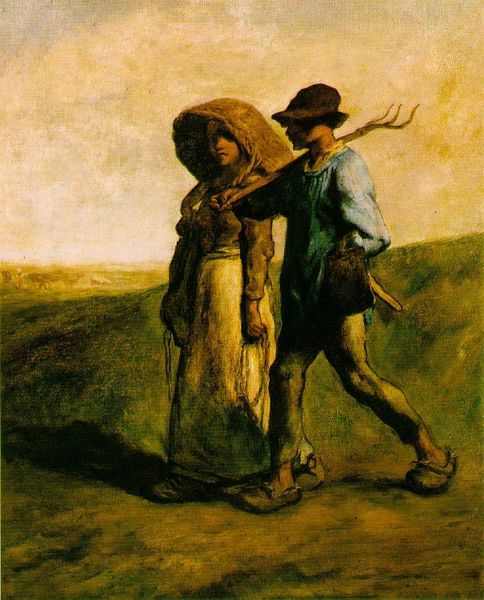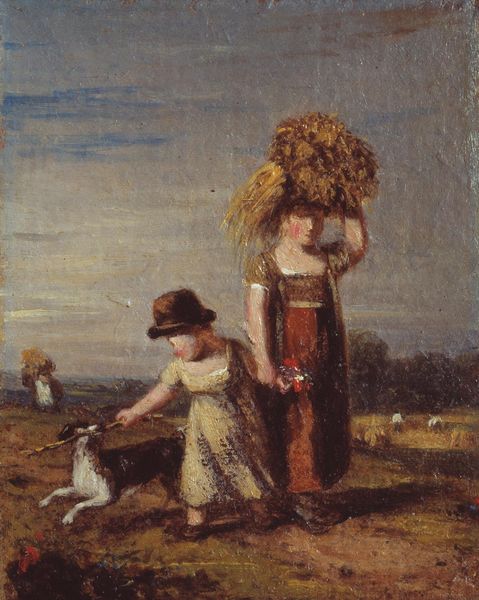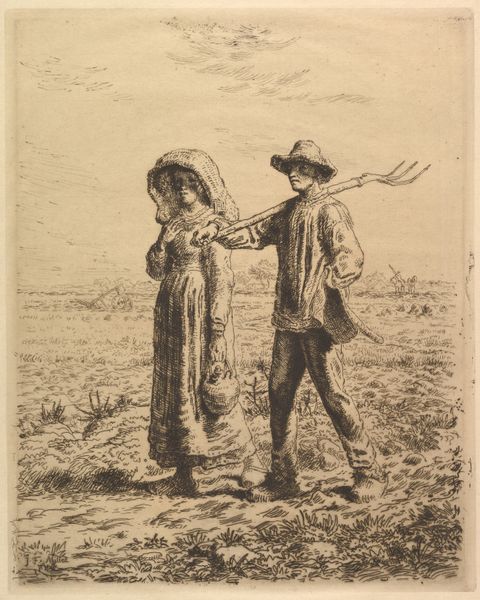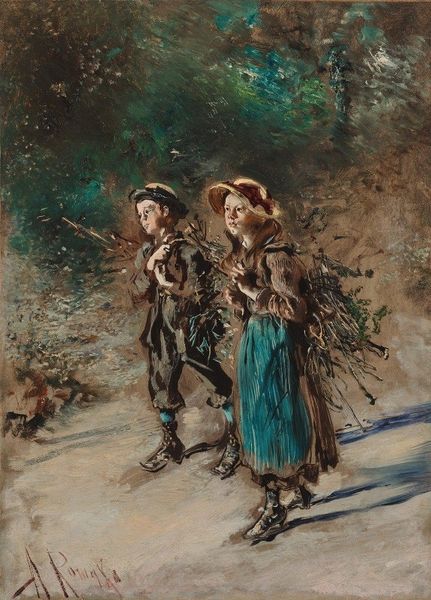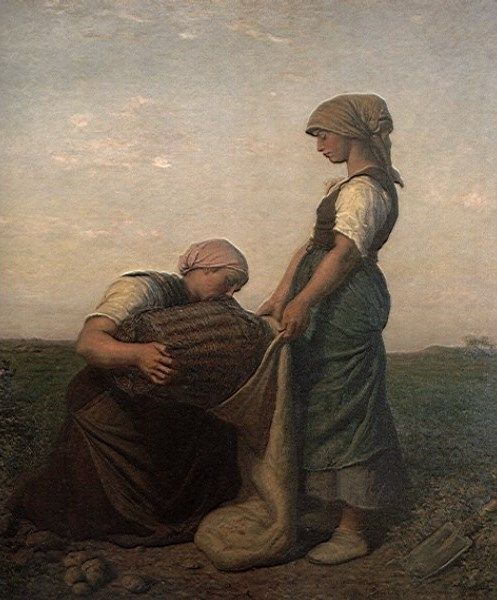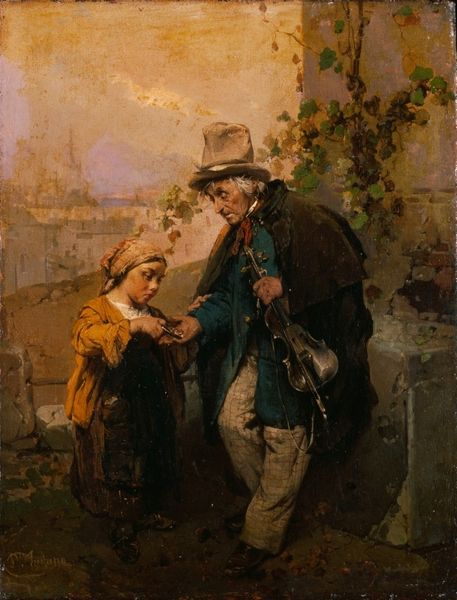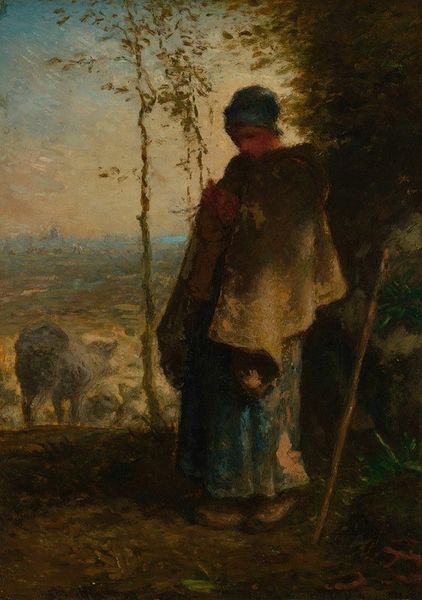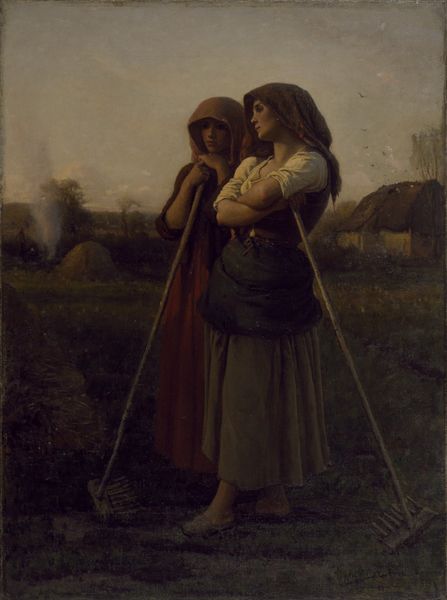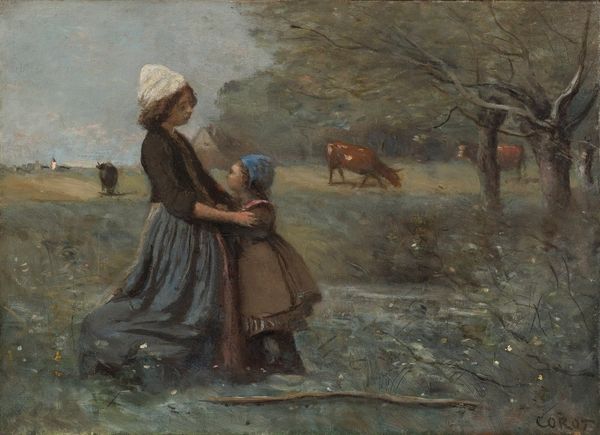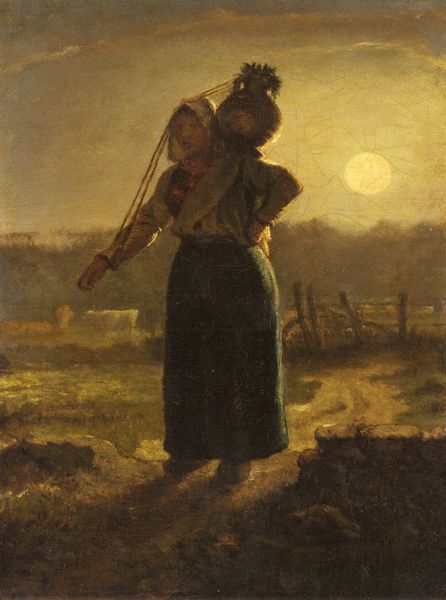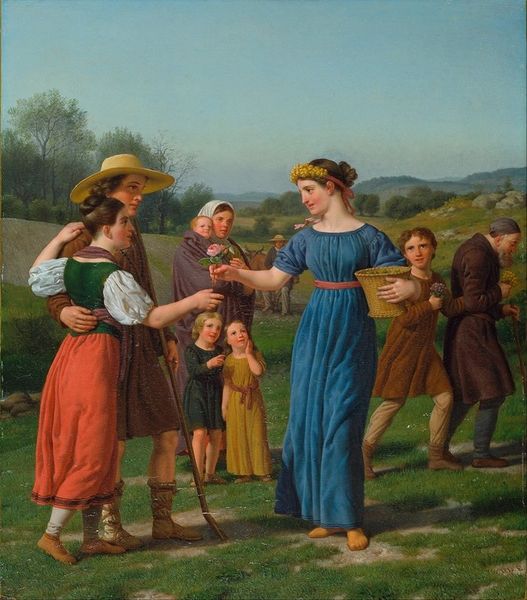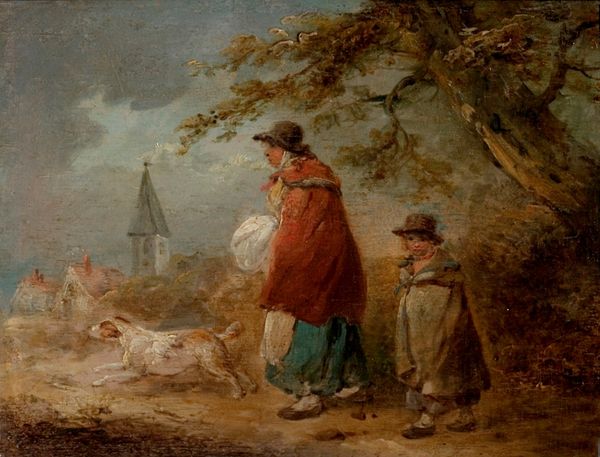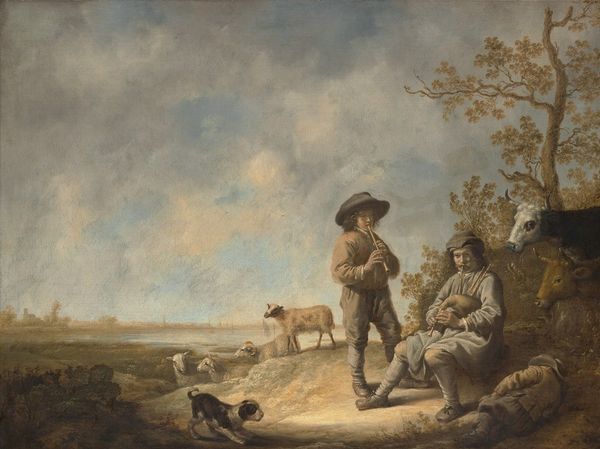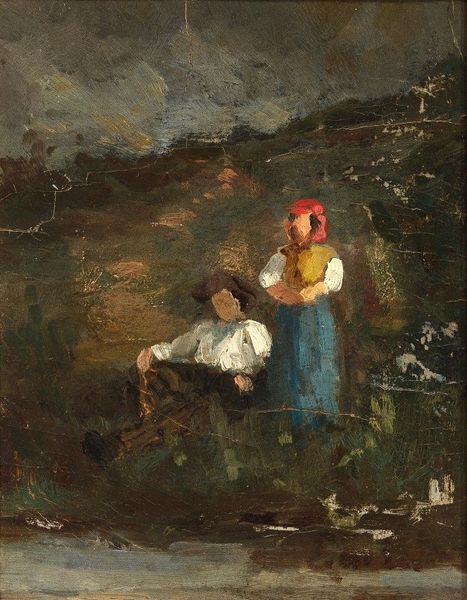
Copyright: Public Domain: Artvee
Curator: This is "Going to Work," an oil painting created between 1851 and 1853 by Jean-François Millet. Editor: The initial impression is quite somber. The earth tones and diffused light create a subdued palette. You immediately focus on the fatigue evident in the posture of the two figures, seemingly weighed down by the landscape itself. Curator: Indeed, Millet sought to depict the realities of rural life and the peasantry with an honesty that had previously been absent in French art. It coincided with rising socialist sentiment and criticism towards the French establishment. He presented the nobility of work as a direct challenge to academic artistic conventions. Editor: Note how Millet utilizes a deliberately limited color range. There's a noticeable emphasis on browns, grays, and muted blues. The figures are solid forms emerging from this earth, linking humanity intimately to the land. He makes you consider the texture of their clothing and the coarseness of the earth under their feet. Curator: The anonymity of the laborers is also crucial. Millet often avoided depicting individual features clearly, symbolizing their representation of the broader peasant class. Consider that contemporary audiences, often wealthy Parisians, likely would never have engaged with this stratum of French society. The painting serves as a window, even a critique. Editor: I am intrigued by the light. Notice it isn't dramatic or directional. It is diffused evenly across the canvas, softly illuminating forms and casting shadows. This creates a kind of leveling effect, where no particular element takes precedence. There’s also that tension between their weighty trudging against that pale almost vacant sky; its very simple, almost rudimentary in construction. Curator: Precisely. And such simplification, though, shouldn't be taken at face value. He invites the viewer to contemplate not just labor's physical burden but its social implications within the broader societal structure of mid-19th-century France. Editor: Well, beyond that historical context, I am taken with the overall unity. Everything serves the quiet solemnity of the figures. The formal elements contribute to the feeling of enduring labor. Curator: Ultimately, Millet succeeded in elevating the ordinary to a point of artistic significance, changing perceptions around labor within the art world. Editor: A very potent intersection of form and social awareness—not easy to pull off successfully, but Millet accomplishes this handily.
Comments
No comments
Be the first to comment and join the conversation on the ultimate creative platform.
